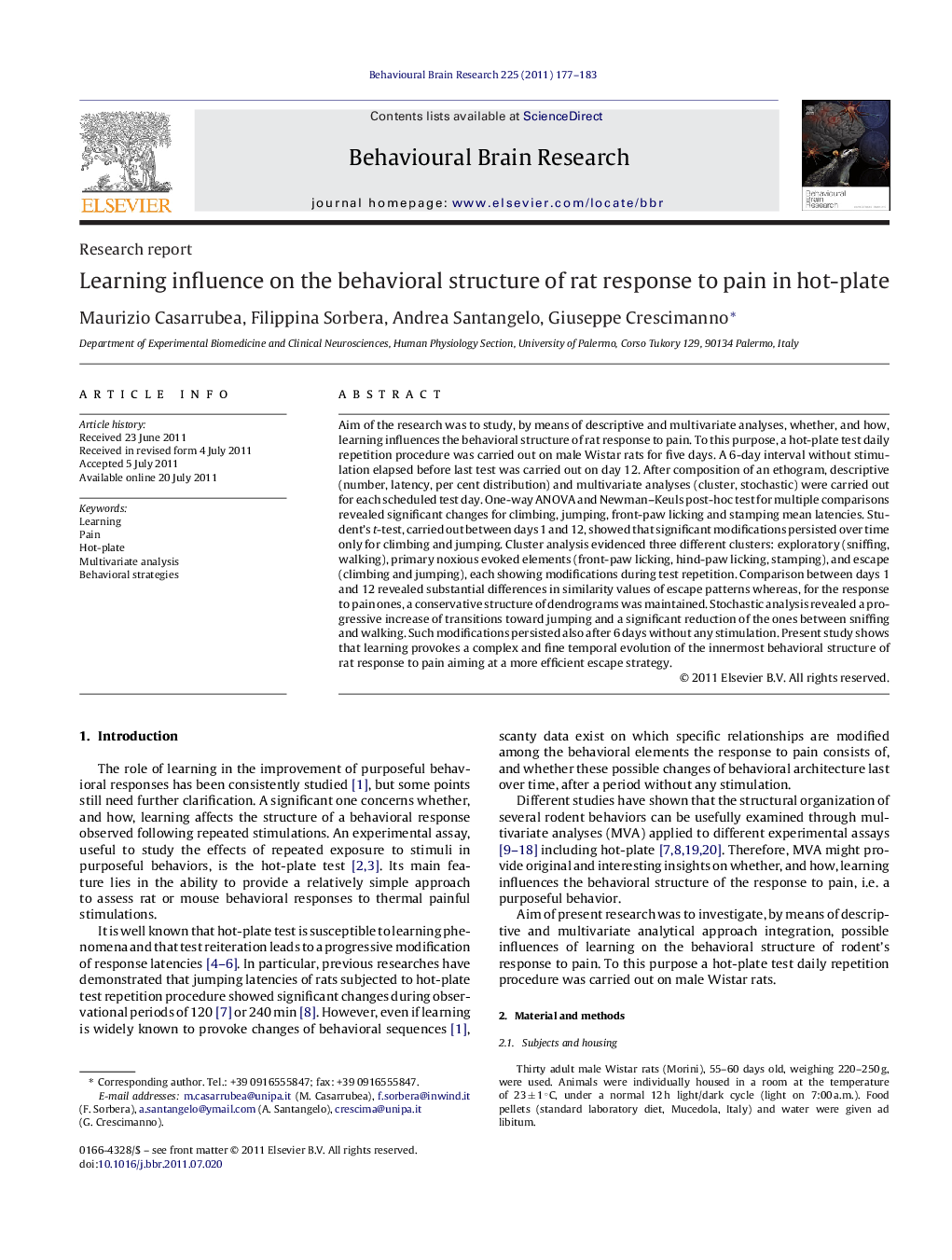| Article ID | Journal | Published Year | Pages | File Type |
|---|---|---|---|---|
| 4313304 | Behavioural Brain Research | 2011 | 7 Pages |
Aim of the research was to study, by means of descriptive and multivariate analyses, whether, and how, learning influences the behavioral structure of rat response to pain. To this purpose, a hot-plate test daily repetition procedure was carried out on male Wistar rats for five days. A 6-day interval without stimulation elapsed before last test was carried out on day 12. After composition of an ethogram, descriptive (number, latency, per cent distribution) and multivariate analyses (cluster, stochastic) were carried out for each scheduled test day. One-way ANOVA and Newman–Keuls post-hoc test for multiple comparisons revealed significant changes for climbing, jumping, front-paw licking and stamping mean latencies. Student's t-test, carried out between days 1 and 12, showed that significant modifications persisted over time only for climbing and jumping. Cluster analysis evidenced three different clusters: exploratory (sniffing, walking), primary noxious evoked elements (front-paw licking, hind-paw licking, stamping), and escape (climbing and jumping), each showing modifications during test repetition. Comparison between days 1 and 12 revealed substantial differences in similarity values of escape patterns whereas, for the response to pain ones, a conservative structure of dendrograms was maintained. Stochastic analysis revealed a progressive increase of transitions toward jumping and a significant reduction of the ones between sniffing and walking. Such modifications persisted also after 6 days without any stimulation. Present study shows that learning provokes a complex and fine temporal evolution of the innermost behavioral structure of rat response to pain aiming at a more efficient escape strategy.
► We study learning influence on the structure of rat response to pain in hot-plate. ► Descriptive and multivariate analyses were carried out for each test day. ► During the test, escape, exploratory and response to pain clusters changed. ► During the test, transitions probabilities among several patterns changed. ► Learning provokes a complex temporal evolution of rat behavior in response to pain.
